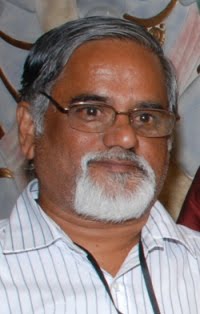Interesting Pages
2015-11-09
3-2015 When Satan meets Cantor -- A book review
Satan, Cantor, and Infinity, and Other Mind-Boggling Puzzles, Raymond M Smullyan (Pub.: Dover Publications, Mineola, New York)
Raymond Smullyan, the master story-teller, wears many feathers on his
cap : mathematician, logician, concert pianist, stage magician, amateur astronomer, puzzle master,
teacher. He often mixes his talents, and creates
amazing books on logic and puzzles, which often call for profound reasoning and mathematical
deduction. His book, “Satan, Cantor and Infinity:
Mind-Boggling Puzzles (by Raymond M. Smullyan) ” is one such masterpiece.
In this book, Raymond Smullyan takes a puzzle-based perspective on the
principles underlying the works of mathematician Georg Cantor, particularly
on infinity. His fascinating riddles involve probability, certainty, time, and
infinity, and they unfold amidst a landscape populated by honorable knights,
lying knaves, quick-witted robots, and other fanciful characters.
This 270+ pages tome, explains 25 puzzles, grouped into 7 parts. Each puzzle
is as intriguing as the other, and demonstrates the inventive genius of the
author. Using an imaginary sorcerer who is really a logician, Smullyan takes
us on a tour of logic and mathematics, including Godel’s famous theorem.
Which brings us to the pioneering discoveries of Georg Cantor. Each puzzle
is not linked to any other in the book, and so the reader may peruse the
contents in any order.
I chose to read the last part of the book (part 6) which had a tantalising
title “A journey into infinity”. This part carries a puzzzle, or rather an
introspection “What is infinity ?” A very lucid conversation involving the
Sorcerer, talks about infinity and the famous “Hilbert’s hotel problem”. This
lead me to my favourite concept – paradoxes. I also found in part 5 “The
envelopes paradox”. I had written about this paradox, in this very journal
“Gonit Sora”, some time ago.
The book has its fair share of puzzles involving truth-tellers (knights) and
liars (knaves). It has therefore several interesting examples of the usage of
Goodman’s principle.
Smullyan not only unveils his puzzles in his own fascinating style. He also
gives clues/solutions to most of his puzzles. But wait ! You need to ponder
well, before you can grasp the puzzle or its solution (my experience) .
Finally, this book is not for the mathematically weak-minded. A good knowledge of Cantor’s set
theory, and the works of Zermelo, Fraenkel, Russel, Godel, and Lewis Caroll, would make reading this
book, a lot more enjoyable. My closing remark would
be that rather than using this book for entertainment, it can also be a valuable and innovative tool
for understanding
mathematics and logic.
Smullyan beautifully sums up his thoughts as follows: “The moral of the story
is that even fallen angels might benefit from a good course in mathematical
logic.”
2015-03-28
2-2015 My own corner on the web
Now, I have my own corner, on the web. The new URL for my website is ::
http://drpartha.org.in/index.htm
You can navigate down to all my pages starting from the above page.
Bookmark this page, and let all your friends know about this new site.
If you own or administer a website, please add a link to the above page from your site.
Thanks,
partha
2015-01-26
1-2015 When did it all start ?
On Christmas Day (25 Dec.) I posed myself the question >> "When was Jesus born ?" . More out of curiosity and perplexion as a maths teacher. The question was repeated and published on the Internet, for all the world to answer ::
http://partha-the-prof.blogspot.in/2012/01/32012-when-was-jesus-christ-born.html
http://partha-the-prof.blogspot.in/2012/01/82012-when-was-jc-born-sequel.html
Now, almost three years later, I get a clue from someone who knows more than me on these matters ::
http://aristean.org/birthmay23.htm
Then, why did someone start the confusion with 25 Dec. ?
There is also confusion on the :
date of crucifixion of JC
The whole question is much more fundamental, and of serious tenor when we ask "When exactly did CE start ?" Are we following a calendar which is of questionable origin ?
I am still confused.
partha
Subscribe to:
Posts (Atom)

